Last Chance to Catch NYC's Holiday Notalgia Train
We met the voices of the NYC subway on our nostalgia ride this weekend!


In 2007, the Museum at Eldridge Street on New York’s Lower East Side completed a 20-year, $20 million restoration of the Eldridge Street Synagogue. The history of the landmarked site began more than a century before. Opened in 1887, the Eldridge Street Synagogue was one of the first erected in the United States by Eastern European Jews. In 1987, local residents and urban preservationists joined forces to save the stunning architectural marvel from the verge of collapse. In 2022, the synagogue is celebrated its 135th anniversary. Below are 13 of our favorite secrets about this stunning historical space.
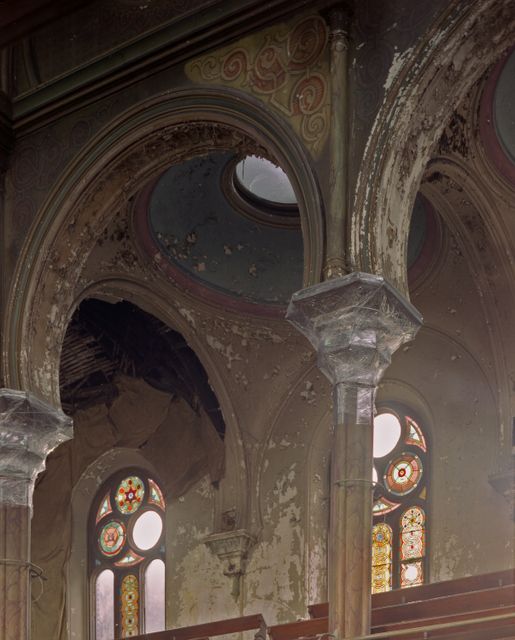
Many visitors find this fact shocking today, but for decades, the main sanctuary of the Eldridge Street Synagogue sat in a state of abandonment. NYU professor Gerard Wolfe rediscovered the sanctuary in the 1970s as he was writing his book, The Synagogues of the Lower East Side. Eldridge Street was one of the spaces he desperately wanted to visit and when he finally got access, this is the scene he saw, “I found the doors of the sanctuary warped shut. I pulled them open and stepped inside, and my hair stood on end. It was like the Twilight Zone, like going into the past.”
Upon the sanctuary’s discovery, the dust inside was so thick one could write in it, and cobwebs hung between the pillars. There was extensive water damage to the dome, with water pouring in from the openings. Pigeons had taken root on the balcony. Empty windows sat where stained glass once let in light, and fragments of walls were missing. As the Museum at Eldridge Street describes in their interactive exhibition, “Prayer books and prayer shawls were scattered on benches, as if waiting for services to resume.”
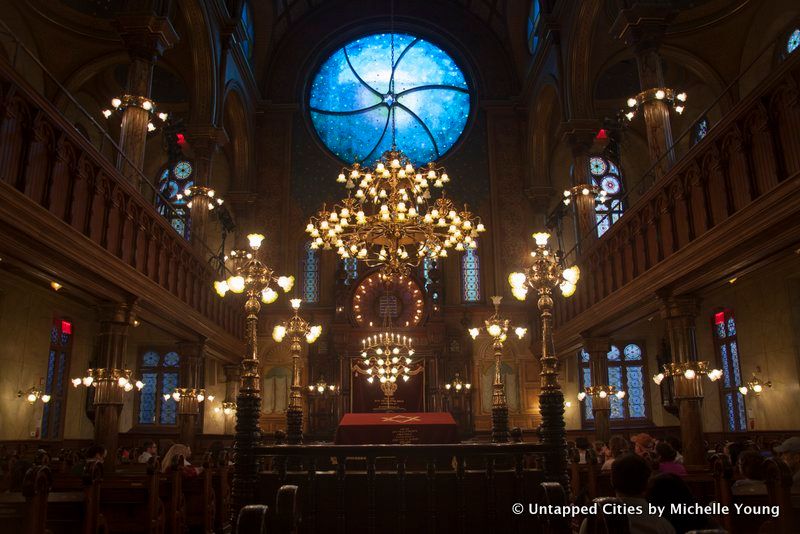
The Eldridge Street Synagogue was built in just 10 months and opened on September 4th, 1887 — just in time for the Jewish High Holidays. The public fascination with the building was so immense, the police department had to be called in for riot control on opening day. However, as suburban flight occurred and immigration quotas were imposed on immigrants from Eastern Europe, the synagogue declined in membership. Without the influx of new members, at some point during the 20th century, the main sanctuary closed.
The painstaking restoration, spurred on by the Eldridge Street Project, founded by preservationist Robert Brandes Gratz, spanned over 20 years and cost $18.5 million. Only in December 2007 did the doors to the main sanctuary re-open to the public once again. The book Beyond the Facade documents the restoration of the synagogue.
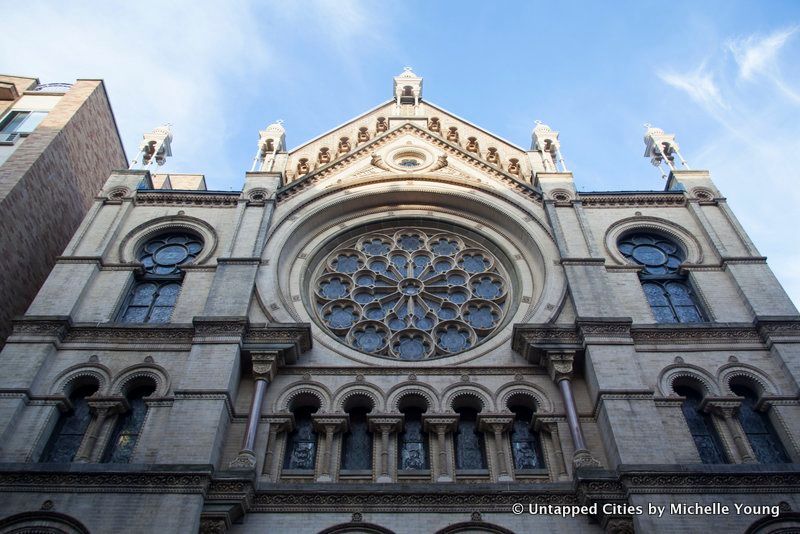
As grand as today’s Eldridge Street Synagogue is, the first locations of worship for the congregation, established in 1852, were in makeshift spaces that included an attic, below a carpenter shop, above a saloon, and a former church. It was not until 1887 that the doors to the building on 12 Eldridge Street opened.
According to the Museum at Eldridge Street, this was the first grand synagogue to be built by Jewish immigrants from Eastern Europe. The experience the Eldridge Street Congregation had with makeshift locations was typical of the time, with the average congregation finding a home in spaces such as former churches — like Eldridge Street — and event halls.
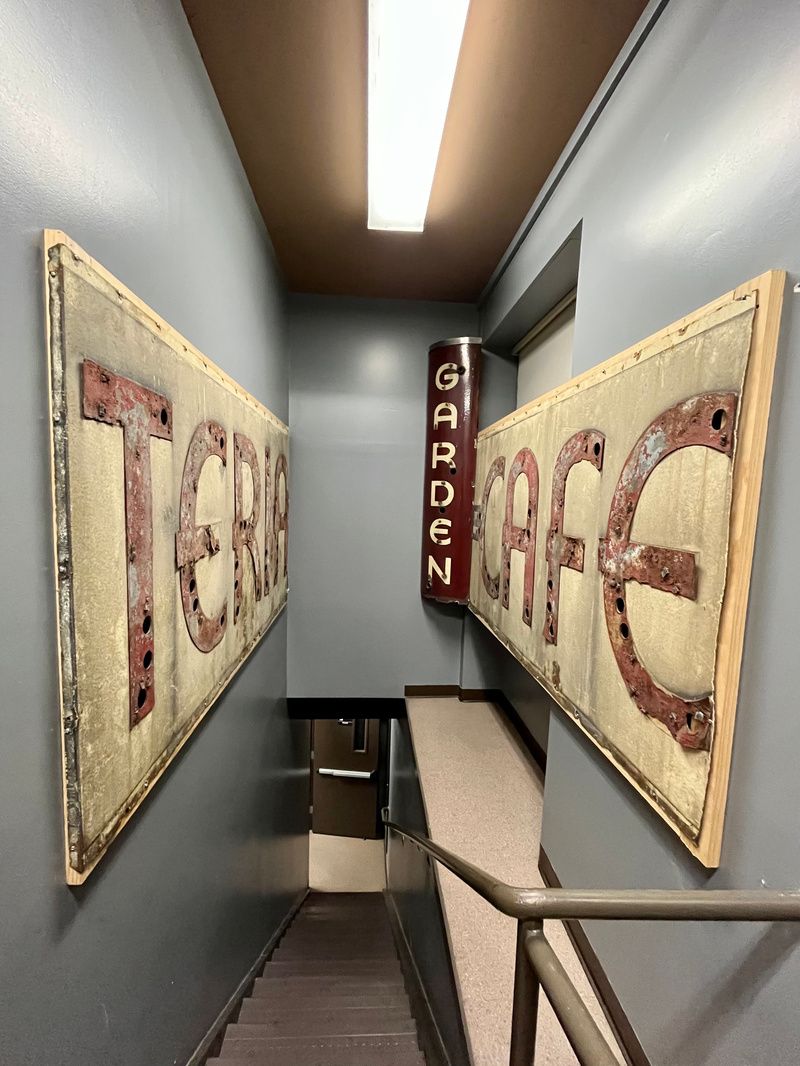
When restoration work was completed in 2007, the synagogue became the Museum at Eldridge Street. This institution’s mission is “to restore and preserve the National Historic Landmark 1887 Eldridge Street Synagogue and to provide cultural and educational programs that serve a broad public.” The Museum hosts a variety of exhibits and public programs throughout the year.
The Museum also has a collection of historic artifacts related to the history of the synagogue and its surrounding neighborhood on the Lower East Side. One of the most unique artifacts is a sign from the Garden Cafeteria, a lost self-service restaurant that once stood on the corner of Rutgers Street. Established by Austrian immigrant Charles Metzger in 1941, the eatery attracted a crowd of Jewish intellectuals. including writers from the nearby offices of Forvertz/The Jewish Daily Forward. The cafeteria closed in 1983 and became a Chinese restaurant. Construction work in 2005 revealed one of the original signs and it was given to the Museum at Eldridge Street for safekeeping. Today, it hangs in a stairwell inside the historic building.
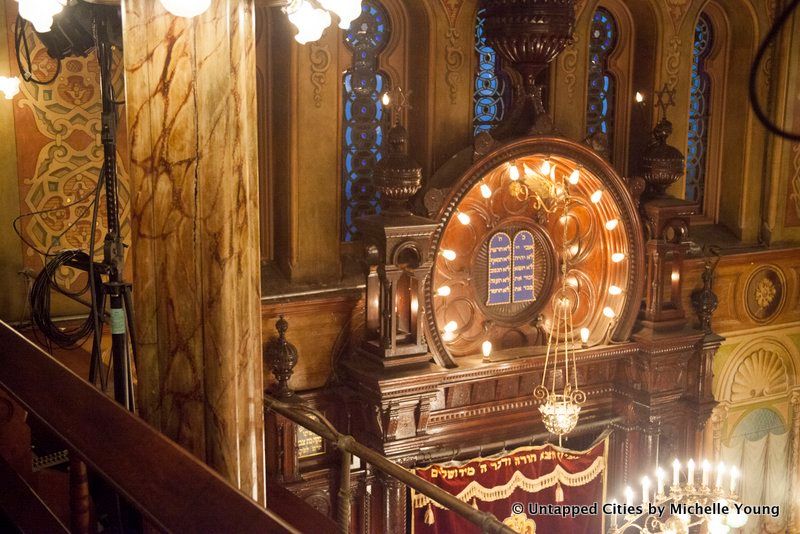
From a distance, the walls and columns of the Eldridge Street Synagogue appear to be made of fine marble. Upon closer examination, it becomes clear that the columns are simply painted to look like that. Fluted columns on the ark in the downstairs sanctuary are the same. In the front of the upstairs sanctuary, tromp l’oeils (meaning trick of the eye) on either side of the ark show a traditional curtain over the ark doors, painted to look real.
These techniques mitigated costs compared to using the imitated materials, but they were still far more expensive than a simple coat of paint as all the details were applied by hand. Even for the restoration, everything was painted by hand, despite the advent of computer technology.
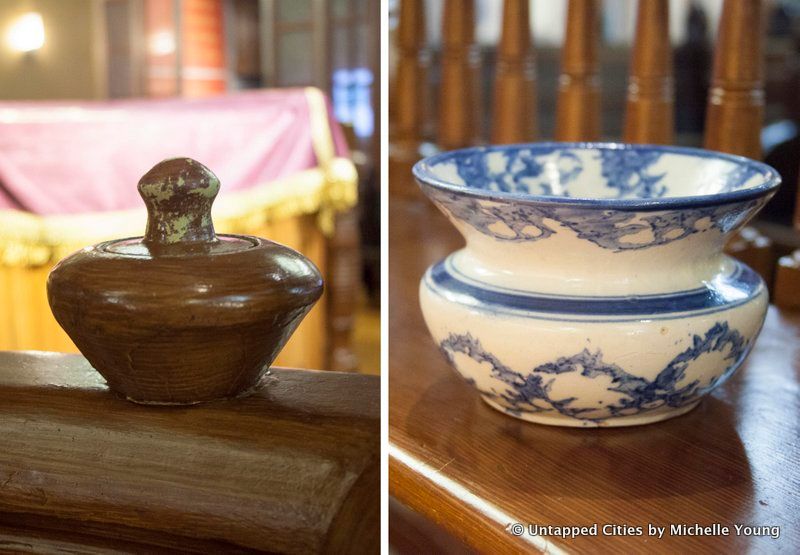
One of the most unusual features of the Museum at Eldridge Street is a snuff box built directly into the bimah, the platform where the Torah is read, in the downstairs synagogue. Snuff, or smokeless tobacco and chewing tobacco, was popular during the late 18th and early 19th centuries. It was especially popular with the Jewish congregation because on the Sabbath, starting a fire isn’t permitted. Instead of lighting up a cigarette or cigar, congregants could instead take a pinch of snuff from the wooden box.
Located beneath the snuff box was another important item, a spittoon. There were strict rules about spitting on the floors, and to ensure that the refuse of chewing tobacco ended up in a proper receptacle, a portion of the congregation’s annual funds went to purchasing new spittoons (as seen on the left in the photo above).
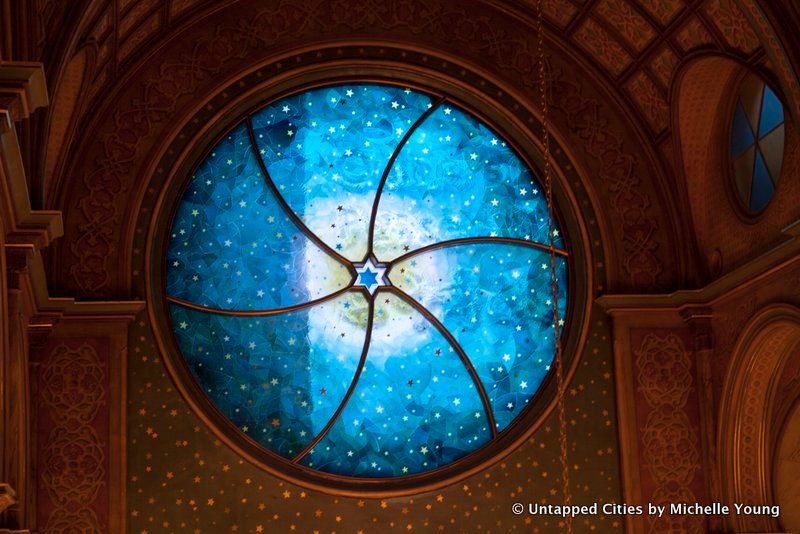
There are no photographs or blueprints that show the original stained glass window above the ark of the Eldridge Street Synagogue. In the 1940s, the window was replaced by a four-paneled window of glass blocks as a means of repair. Artist Kiki Smith and architect Deborah Gans were commissioned by the Museum in 2010 to design a new window. The stunning piece they made consists of 1,200 individually shaped pieces of colored glass, etched with more than 650 stars.
Normally, when you see stained glass there are heavy, dark-colored lead frames in which stained glass pieces are slotted. Here, silicon was used instead to fuse the pieces together, giving it an impressive luminosity and unique design. The glass blocks in the window now form a wall in the downstairs sanctuary, with the materials saved in keeping with the preservation principles of the Museum at Eldridge Street.
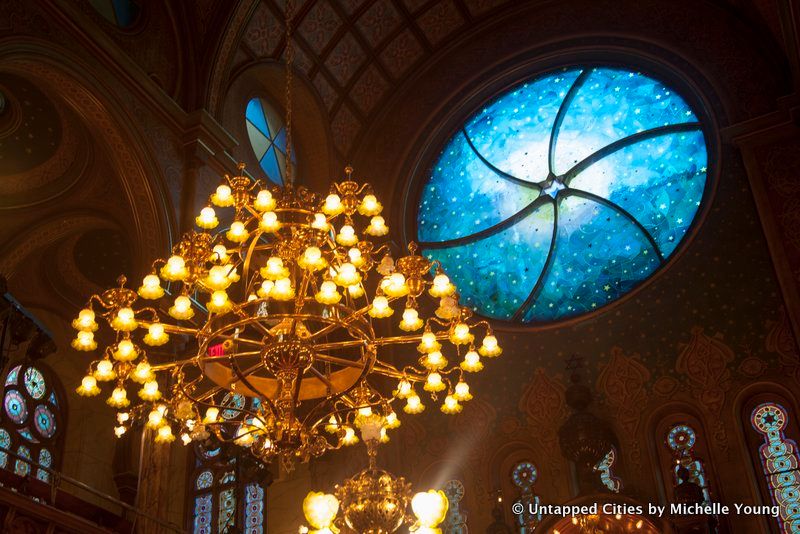
When the Eldridge Street Synagogue first opened, the lighting was powered by gas and natural light from the stained glass windows. But in 1907, the fixtures were converted to accept electricity. If you look at the stunning chandelier in the main sanctuary today, you’ll see that the glass bulbs face downwards. This makes sense for electrical lighting but not for gas lighting. The original configuration of this chandelier was the other way around.
You’ll also notice bare Edison-style lightbulbs throughout the sanctuary. According to the museum, this is proof that the congregation was excited by the new technology and did not believe the bulbs needed any adornment.
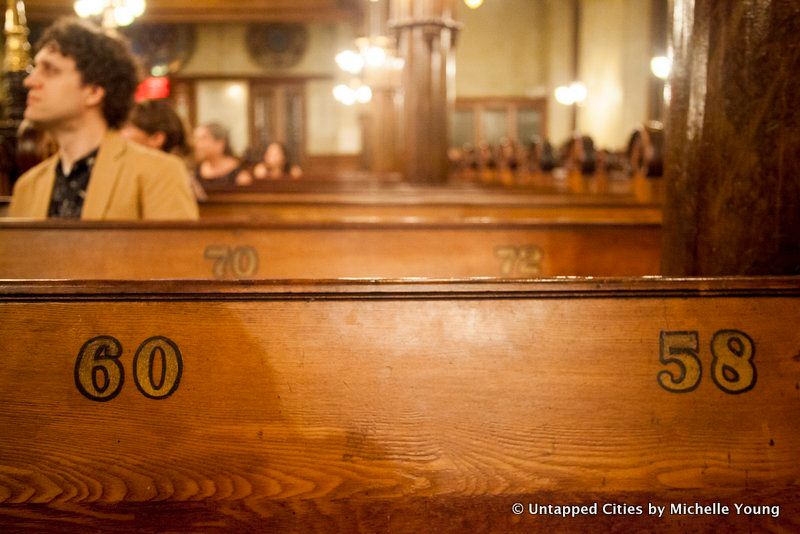
As a means to raise funds (and also prevent arguments between congregants), the Eldridge Street Synagogue sold the right to sit in numbered seats. The best seats in the house were up front, next to the ark facing the congregants. Prices ranged from a few dollars to several hundred, and a formal contract guided the exchange.
You can see samples of the contracts on display in the Museum at Eldridge Street. These documents reveal that Seat #1 was purchased in 1887 for $1,100 by Isidor Abraham. That would be about $34,000 today!
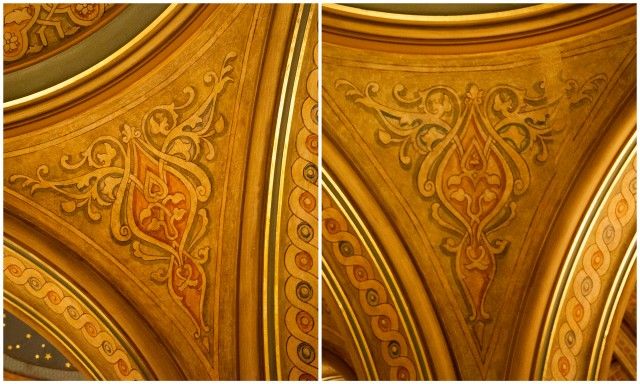
The arches supporting the domes above the balconies of the Eldridge Street Synagogue all have the same pattern that joins together to form a spade inside the ornamentation. However, one is not like the rest.
If you are facing the front of the sanctuary, head to the balcony on the right side and look for the second dome as you walk towards the front. Instead of a spade, one arch has a heart, “perhaps put there by a romantic artisan,” the Museum writes.
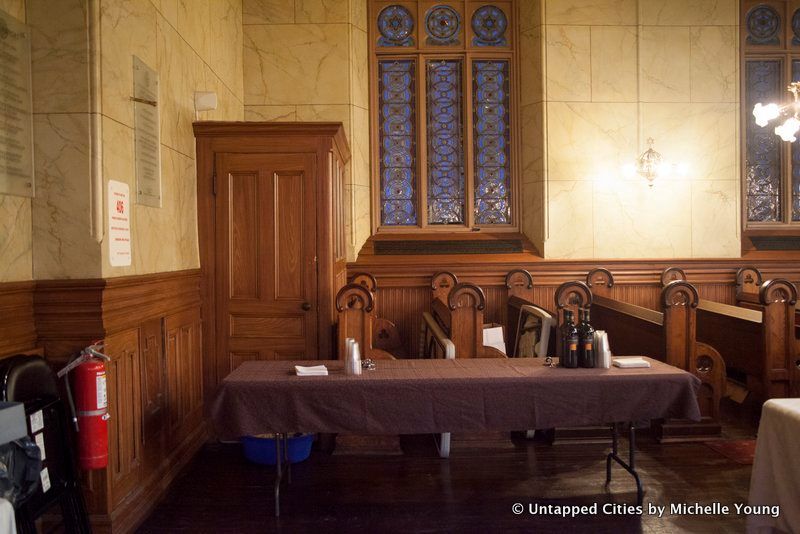
Down the original main staircase from the sanctuary and behind a door, one will find the synagogue’s original toilet. Today, the bathroom the toilet sits in is a scene worthy of a haunted house, with rusty pipes and old bricks scattered about.
There’s another toilet housed in an added room in the back of the sanctuary, surrounded by wooden walls. The story goes that when the Eldridge Street Synagogue was renting out the downstairs portion of the sanctuary to another congregation, the two did not get along. As such, Eldridge Street decided to build its own upstairs.
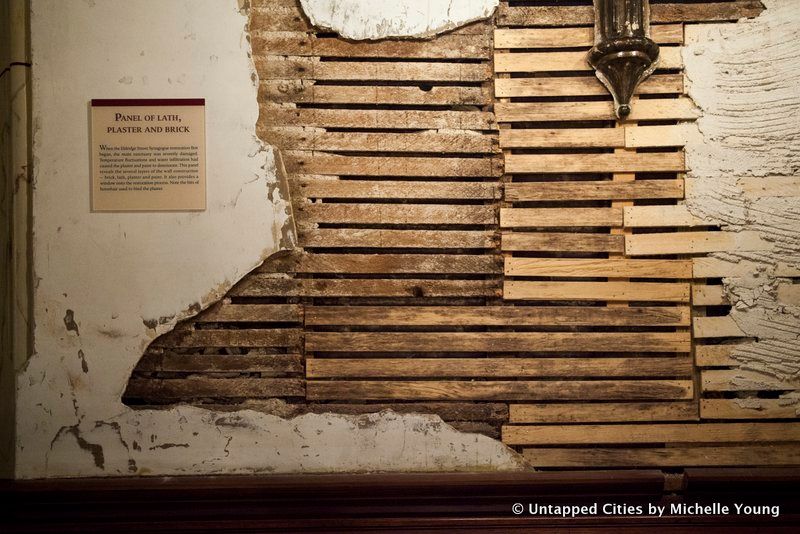
The main tenet of the restoration plans of the Eldridge Street Synagogue was to make sure the space still felt used and that history could be revealed in the architecture. As the Museum at Eldridge Street writes, “We did not want the synagogue to look like a newborn baby but rather a well-maintained and absolutely loved 120-plus-year-old building.”
Part of that history is certainly its decades of abandonment, and if you look along the left balcony of the upstairs sanctuary, you will see a wall deliberately left bare. This bareness was the state many portions of the walls were in, and the museum left a panel this way to showcase how the building was constructed — with brick, lath, plaster, and paint. You can also see pieces of horsehair, that were used to bind the plaster during the restoration.
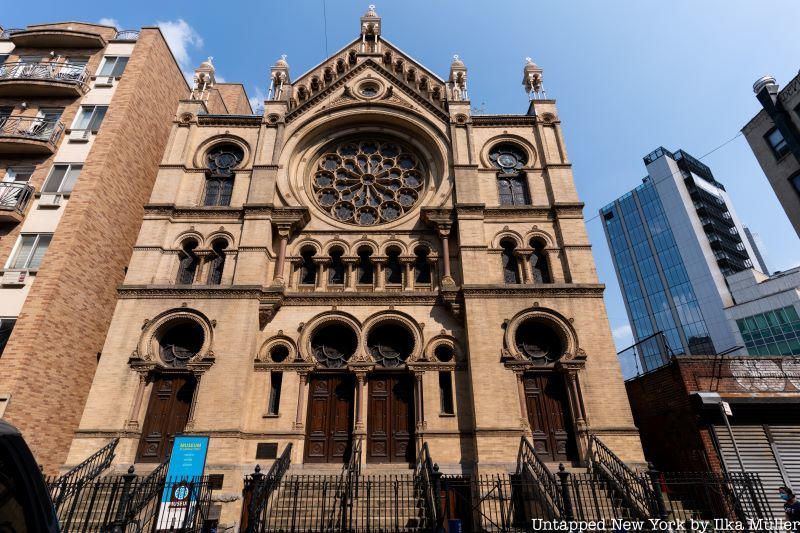
The modernization of the Eldridge Street Synagogue during its restoration included installing 20th and 21st-century amenities, like air conditioning and an elevator. The congregation also had to get the building up to code. In order to house the heating, cooling, and electrical systems, a new basement had to be dug. This was done by hand to keep the building stable. Piers were replaced mostly with steel supports, going up to 18 feet below ground.
Subscribe to our newsletter